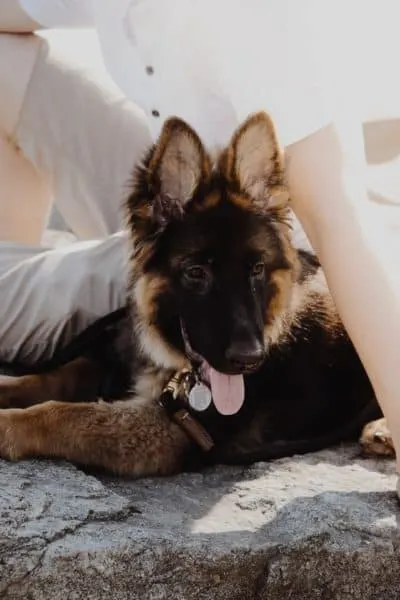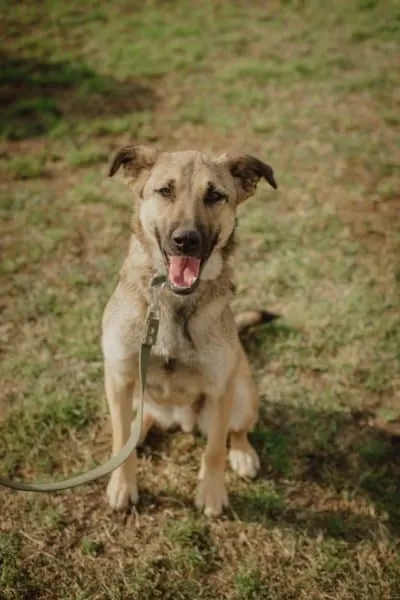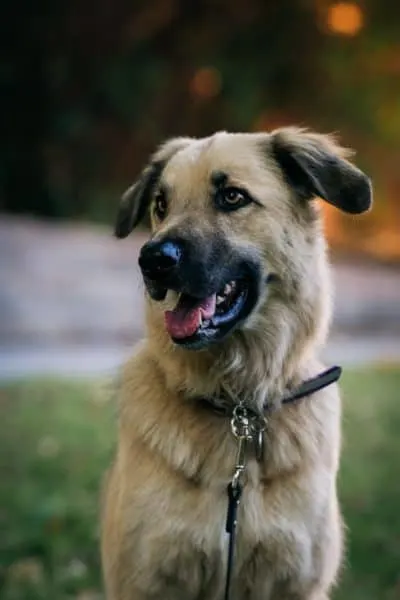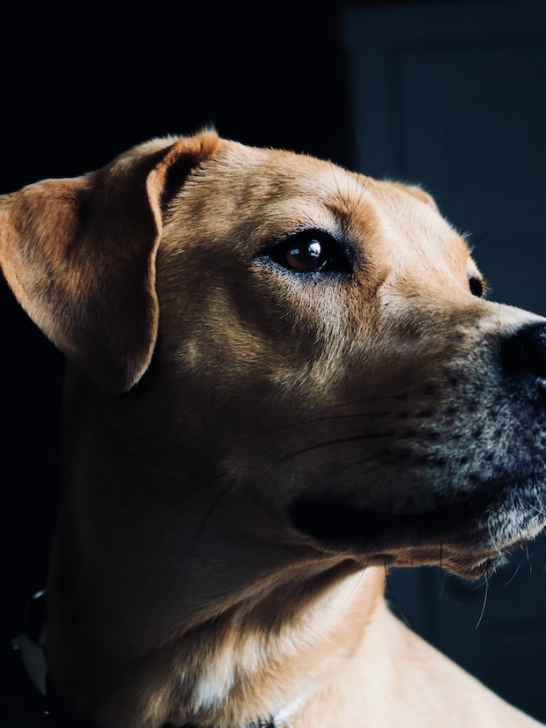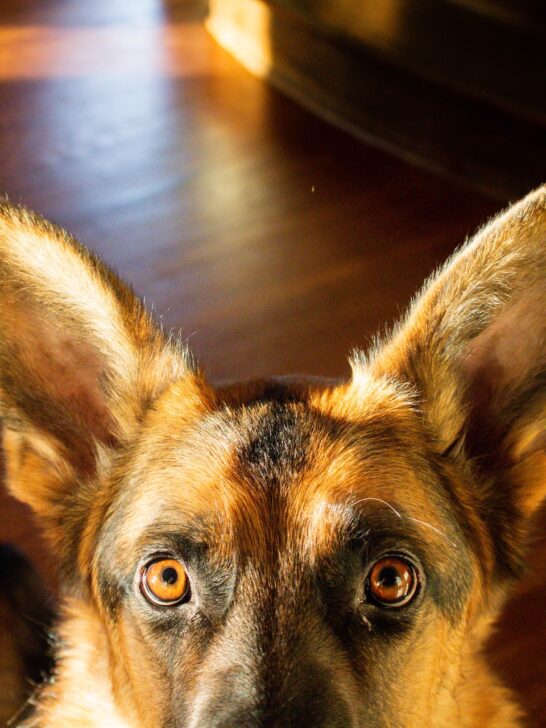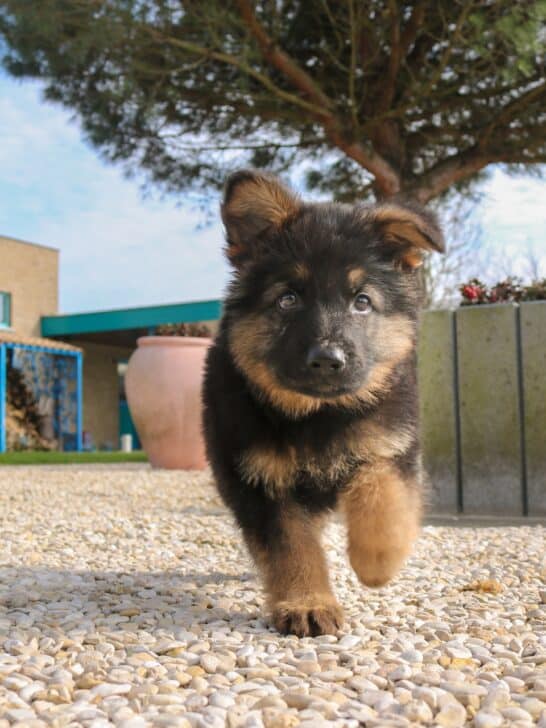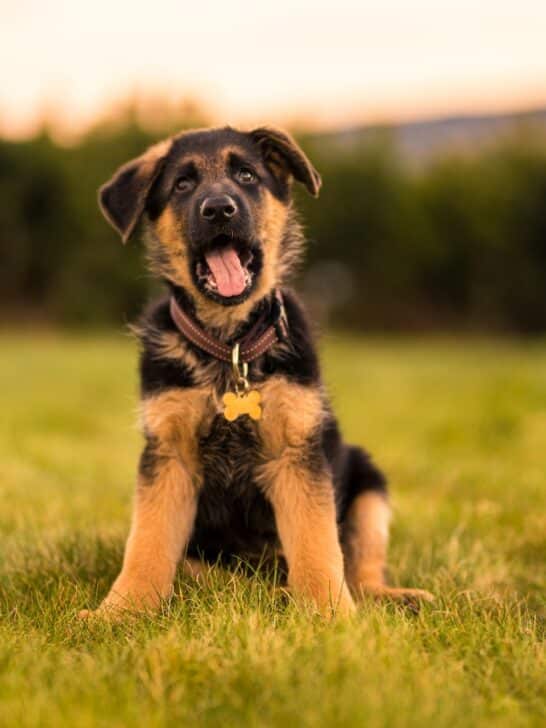The Best Ways to Leash Train Your German Shepherd Puppy
When you have a German Shepherd puppy, you know eventually you will need to train him to behave civilly on a leash.
A leash is not so much to gain control over your GSD but is more a means to establish an open line of communication.
Have you ever seen the Toy Poodle who seems to read her owner’s mind even without a leash? She stays within a few feet of her person’s heels, keeping her eyes trained for every possible cue.
Police dogs have an equally intangible partnership with their handlers. Such communication usually begins with weeks of leash work.
While leash training a German Shepherd puppy takes time and patience, it does not have to be a labor of frustration.
Like other skills, leash training should have a foundation of positive reinforcement.
Establishing proper leash etiquette involves accustoming your Shepherd to collar and lead, de-sensitizing her, and introducing advanced skills.
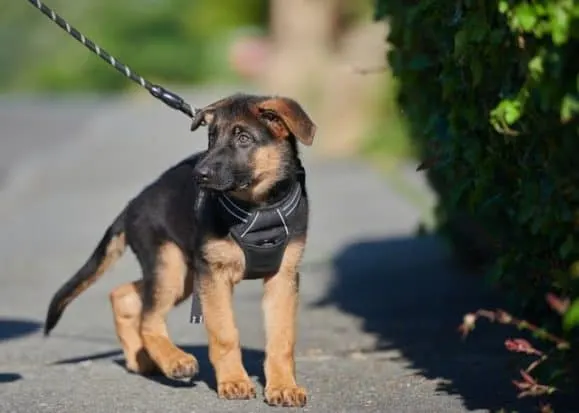
How do you introduce your German Shepherd puppy to the leash?
When choosing equipment for your German Shepherd puppy, it is best to start simple. Fit your pup for a nylon or leather collar that you can adjust as she grows.
Make sure your pup’s collar or harness is comfortable enough that she can wear it all of the time.
A harness allows you to control your puppy’s body weight better, but a neck collar is more effective for correction.
The exception is a harness with a strap across the front of the chest.
Another option is a head collar that fits a dog similar to a horse halter.
Head halters are best left to professional trainers as dogs may have difficulty adjusting, and improper use can cause great discomfort for your pet.
Approach your dog to connect a leash rather than call her to you.
Be prepared with plenty of treats or favorite toys because leash training requires constant reinforcement.
Some trainers do not believe in food treats, but you need some kind of powerful incentive.
According to most sources, including a blog by Petmeds.com, you should be able to comfortably fit two fingers between a fastened collar and the skin of your dog’s neck.
Adjust the collar if possible, so it does not feel tight across your fingertips.
Similar to the collar, the leash should also be simple.
Unless your puppy chews excessively on his leash, you can use one of leather, nylon, rope, or plastic.
For heavy chewers who you cannot deter, you can use a chain lead. Keep in mind a lightweight material will be less distracting for a small puppy.
The most effective length for your first leash is about six feet. You will eventually need a short lead also of about three feet.
Begin leash training in a controlled environment
You can start leash training your Shepherd as soon as she arrives home at eight to twelve weeks.
Most of your initial work should focus on making your pup comfortable with a collar or harness and leash.
Indoors
There are a few reasons you should initiate leash training indoors.
- Your house is a safe area with well-established, clear boundaries
- As a training venue, your home will have the fewest distractions.
Allow your pup to drag the leash
When you initiate leash training, your primary goal for young puppies should be to help them get used to have something attached to their collars.
Once you snap on the leash, allow your pup to walk around or even play.
You can allow your pup leash time for 10 to 15 minutes at a time two or three times a day.
Your pup can have some of his leash sessions in an enclosed yard as well.
You may remember a time when you would attach a lead to your puppy’s collar and let her drag it around the house all day.
We recommend you only attach the leash for no more than 10 minutes at a time in the beginning and never leave your pup unsupervised.
Your pup could destroy the leash by chewing, or worse, entangle himself in it or wrap it around furniture or some other object.
Finally, leash work is mentally challenging for pups.
When you first buckle your new puppy’s leash to his collar, it is not unusual for him to try to bite it.
Although it may be tempting to correct your pup’s behavior with a stern scolding, rewarding your dog when he finally lets go of the leash is more effective.
If you have already taught your pup commands like “Leave It” or “Drop it,” you may find them useful to encourage your puppy to stop grabbing the leash.
Take advantage of skills your puppy learns in fun activities like fetch or remedial bite work and use them in your leash training.
The first few lessons, especially, are exercises in persistence, each session marked by gradual improvement.
Eventually, your pup should accept the leash as an extension of her collar.
Walk your German Shepherd pup around the house
Your puppy can learn a lot about walking on a leash in the safety of your home.
After you have allowed your puppy to drag the leash for a few days, she may throw a tantrum when you pick up the end and try to lead her.
If your puppy resists the restriction picking up her leash causes, simply remain still until she stops fighting. Reward her immediately when she relaxes.
You may need to repeat the process numerous times as she may balk at any tension you put on the leash.
Avoid jerking on the leash, pulling against your dog, or applying constant and unyielding tension.
If you yank on your dog’s leash, you will stimulate her opposition reflex according to the American Kennel Club.
Pulling on your dog will only make her jerk against you with greater force.
You may have found out the hard way that you rarely win a pulling contest against your dog even if you can drag her several feet across the floor.
When your pup seems ready, walk him for short periods around the house just as you would outside. At first, do not worry about obedience to the leash.
Reward your pup any time he allows the leash to go slack or whenever he looks toward you for direction. Also, reward him for walking at your side.
Give your dog direction and purpose by tossing treats in various locations throughout the home, allowing your puppy to sniff them out and eat them on your walk.
Random treats will keep your puppy in a good frame of mind, relaxed about the leash, and interested in the task at hand.
It is time to go out in the yard
With consistent and positive leash work, your puppy will be ready to expand her range beyond your home in a relatively short time.
Your next stepping stone for leash training should be an enclosed outdoor area.
Despite the fact you are working in a fenced-in space, you should teach your puppy that every training session is like a normal walk.
Once your puppy is as comfortable with the leash outdoors as he was in the house, start incorporating more obedience and additional structure into your exercises.
Your yard or other designated areas will provide security for your puppy, but there will be more distractions than there were inside.
Again, persistence and positive reinforcement will keep your puppy on track to becoming a pleasant walking companion.
There are a few times when it is beneficial to walk your dog on your fenced-in property as opposed to in public.
Young puppies – Puppies have an underdeveloped immune system, leaving them susceptible to viruses prevalent in the environment like Parvo.
They do not typically complete their vaccination series until the age of 12 to 16 weeks, and initial boosters do not completely protect them.
You should isolate a very young puppy from potential exposure to viruses.
Uneducated dog – You do not want to walk a dog without leash knowledge outside of an enclosure.
German Shepherds who do not walk well on a leash can injure your arm by pulling or yanking, get away from you, or injure themselves. Social skills on a leash make your pet safer.
Aggression – Leash training in an enclosed area will help you avoid confrontations with people and other dogs if your pet is aggressive.
While muzzling your dog in public is an option, it does not prevent any underlying aggression and associated stress.
Retraining – An enclosure always gives you a viable means to refresh your dog’s leash skills and perhaps train advanced obedience.
What are a few proven methods for leash training German Shepherd puppy?
What are the basic leash skills?
Your German Shepherd puppy should learn a few basic skills before you attempt to leash walk her in public.
When you initially go outside your yard, choose familiar routes, If you know the path you are taking, it increases the security for your dog.
As your puppy continues to master leash walking, you can eventually start venturing on new routes, increasing the novelty.
It is also about this time that we recommend moving to a short, stiff leash to begin training heel.
A short lead keeps your puppy near you, and a lack of flexibility in the material gives you better control.
- No lunging at people or other animals.
- Walk by your side – Teach your puppy not to switch from side to side as this is a serious problem that can cause you to trip and fall.
- Calm and confident demeanor without pulling your arm – A large, powerful dog like a German Shepherd who pulls relentlessly can cause serious injury to your shoulder and make you lose your balance.
- Your dog’s attention should mostly be on you – Your dog does not always have to look at you for you to know you have her attention. Your Shepherd’s attempts to stay near you, cooperative spirit, and an ear turned in your direction are all indications she is paying attention to you.
How do you eliminate your dog pulling on his leash?
When you begin leash training in earnest, you should get a leash that is short but does not pull your puppy too tightly.
As your pup’s training progresses, his leash can get longer.
Your puppy should always work from the left (traditional) or right side for consistency.
One of the most effective ways to train your dog not to pull on her leash is to abruptly stop walking when she tugs on you.
You do not need to pull or yank your dog towards you.
Your pup will soon notice that you have stopped moving and she cannot go anywhere.
When your GSD puppy notices you have stopped and looks in your direction, reward her with a treat. Resuming the walk is also a reward.
Halting every time your puppy pulls on you at the end of her leash requires consistency and patience. You can also introduce the “heel” command during your sessions.
Many puppies get into the bad habit of switching sides during a walk, often crossing right in front of you.
You can address random changes in direction by making an about-face and reversing your path.
Every time your puppy heads in a direction counter to your chosen line of travel, abruptly head opposite to where she wants to go.
Your ultimate goal is to reward your dog when she allows the lead to go slack and make her work harder when she applies tension by going against you.
Another method of training your puppy to walk politely by your side during walks is to use a type of carrot and stick maneuver.
Hold a treat just in front of your dog while walking, and if she can maintain her position by your side for 10 feet, she gets the reward.
You may have to shorten the distance in the beginning.
What about advanced leash training?
Although not suitable activities for puppies in their advanced stages, you can begin herding and agility training of your German Shepherd puppy with the aid of a long leash.
Until your pup’s growth plates close, you will only be able to introduce her to the exercises and perform light work.
We mainly aim to illustrate how effective leash training of a Shepherd as a puppy is the backbone to more advanced skills.
Long Line
Long-lining can be a nice addition to your leash training. Its main use in basic obedience is to reinforce your puppy’s recall.
Usually, about 30 feet long, it often helps pups obey “heel” and “come” without a leash.
The following two videos are examples of effective GSD leash training
This video illustrates the use of a short leash and why German Shepherds make efficient police dogs.
The most notable features are frequent praise, consistency, and persistence. Note the pup’s eye contact and single-minded focus on his trainer.
Also, notice the trainer is using play as an incentive. In this case, the leash is only a backup because the puppy is so well-trained and engaged.
























